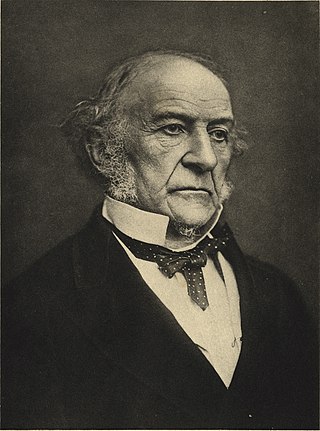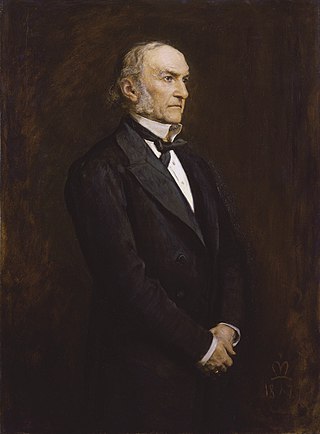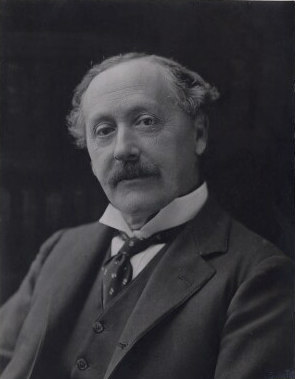
William Ewart Gladstone was a British statesman and Liberal politician. In a career lasting over 60 years, he served for 12 years as Prime Minister of the United Kingdom, spread over four non-consecutive terms beginning in 1868 and ending in 1894. He also served as Chancellor of the Exchequer four times, for over 12 years.
1885 (MDCCCLXXXV) was a common year starting on Thursday of the Gregorian calendar and a common year starting on Tuesday of the Julian calendar, the 1885th year of the Common Era (CE) and Anno Domini (AD) designations, the 885th year of the 2nd millennium, the 85th year of the 19th century, and the 6th year of the 1880s decade. As of the start of 1885, the Gregorian calendar was 12 days ahead of the Julian calendar, which remained in localized use until 1923.
The year 1885 in science and technology involved some significant events, listed below.

The 1892 United Kingdom general election was held from 4 to 26 July 1892. It saw the Conservatives, led by Lord Salisbury again win the greatest number of seats, but no longer a majority as William Ewart Gladstone's Liberals won 80 more seats than in the 1886 general election. The Liberal Unionists who had previously supported the Conservative government saw their vote and seat numbers go down.
The year 1885 in architecture involved some significant architectural events and new buildings.

Sway is a village and civil parish in Hampshire in the New Forest national park in England. The civil parish was formed in 1879, when lands were taken from the extensive parish of Boldre. The village has shops and pubs, and a railway station on the South West Main Line from Weymouth and Bournemouth to Southampton and London Waterloo. It is the site of Sway Tower, a 66-metre (217 ft) concrete folly built in the 19th century.

George John Shaw Lefevre, 1st Baron Eversley was a British Liberal Party politician. In a ministerial career that spanned thirty years, he was twice First Commissioner of Works and also served as Postmaster General and President of the Local Government Board.

Gladstonian liberalism is a political doctrine named after the British Victorian Prime Minister and Liberal Party leader William Ewart Gladstone. Gladstonian liberalism consisted of limited government expenditure and low taxation whilst making sure government had balanced budgets and the classical liberal stress on self-help and freedom of choice. Gladstonian liberalism also emphasised free trade, little government intervention in the economy and equality of opportunity through institutional reform. It is referred to as laissez-faire or classical liberalism in the United Kingdom and is often compared to Thatcherism.
Events from the year 1885 in Ireland.
Events from the year 1898 in the United Kingdom.
Events from the year 1868 in the United Kingdom.
Events from the year 1884 in the United Kingdom.
Events from the year 1873 in the United Kingdom.
Lymington was a parliamentary borough in Hampshire, which elected two Members of Parliament (MPs) to the House of Commons from 1584 until 1868, and then one member from 1868 until 1885, when the borough was abolished.
Events from the year 1892 in the United Kingdom.
Events from the year 1886 in the United Kingdom.
Events from the year 1883 in the United Kingdom.

Herbert John Gladstone, 1st Viscount Gladstone, was a British Liberal politician. The youngest son of William Ewart Gladstone, he was Home Secretary from 1905 to 1910 and Governor-General of the Union of South Africa from 1910 to 1914.
Richard Thomas Shannon was an historian best known for his two-volume biography of William Ewart Gladstone. He was appointed Professor of Modern History at the University College Swansea, University of Wales in 1979.

The Gladstone Memorial on the Strand, London is a bronze sculpture of the British statesman, created by Hamo Thornycroft between 1899-1905. The statue was erected as the national memorial to Gladstone and shows him in the robes of the Chancellor of the Exchequer. The figure stands on a plinth surrounded by allegorical figures depicting four of the Virtues, Courage, Brotherhood, Education and Aspiration. The memorial is a Grade II listed structure.








